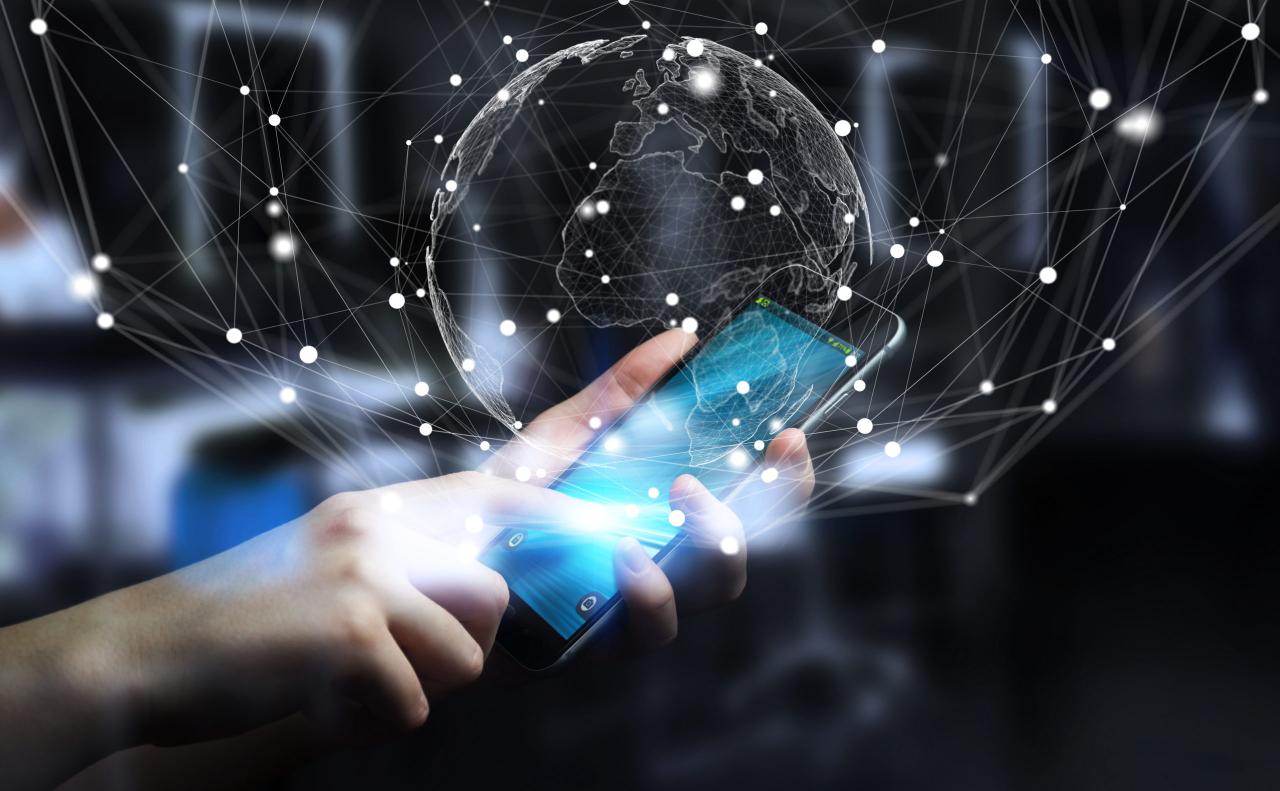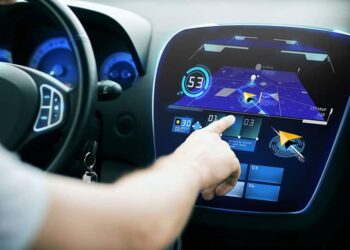The digital fabric of our modern world is undergoing an unprecedented expansion, driven by Connectivity’s Next Big Leap. What was once a luxury is now a fundamental necessity, and the evolution of communication technologies is profoundly reshaping every facet of human experience. From invisible signals powering smart devices in our homes to seamless networks bridging continents, these groundbreaking innovations are dissolving traditional boundaries of distance and access. This in-depth exploration delves into the cutting-edge frontiers of connectivity, dissecting how these revolutionary advancements are not merely enhancing existing communication methods but actively redefining industries, fostering global collaboration, and unlocking unprecedented possibilities for a truly intelligent and interconnected future. We’ll examine the intricate mechanisms behind these powerful systems, understanding their current impact, and their boundless potential to usher in an era where information flows freely and instantaneously, connecting everyone, everywhere.
The Wireless Revolution

Terrestrial wireless technologies remain the backbone of most daily connectivity, and their continuous evolution is pushing the boundaries of speed, capacity, and reliability.
A. 5G and Beyond: The Hyper-Connected Edge: 5G, the fifth generation of cellular technology, is far more than just a speed upgrade; it’s a foundational shift enabling a truly hyper-connected edge. It delivers ultra-low latency (critical for real-time applications like autonomous vehicles and remote surgery), massive capacity to support billions of connected devices (the Internet of Things), and multi-gigabit speeds. These capabilities are unlocking new applications in smart cities, industrial automation, and immersive extended reality (XR) experiences. Looking ahead, research into 6G and even terahertz (THz) communication promises even more dramatic leaps, potentially offering terabits per second speeds, holographic communication, and pervasive sensing capabilities that can map environments using wireless signals. This next generation of wireless will be the invisible nervous system for future digital societies, integrating physical and digital realms more deeply than ever before.
B. Wi-Fi 6E, Wi-Fi 7, and Local Network Dominance: While cellular networks provide wide-area coverage, advanced Wi-Fi standards are revolutionizing local area connectivity. Wi-Fi 6E expands Wi-Fi into the 6 GHz band, offering significantly more bandwidth, lower congestion, and reduced latency, especially in densely populated areas or smart homes with numerous devices. Building on this, Wi-Fi 7 (802.11be, or “Extremely High Throughput”) promises even greater speeds (up to 46 Gbps), efficiency, and robustness by leveraging wider channels (320 MHz), more advanced modulation techniques (4096-QAM), and multi-link operation (MLO) for simultaneous data transmission over multiple frequencies. These advancements are crucial for supporting bandwidth-hungry applications like 8K video streaming, high-fidelity VR/AR, and seamless connectivity for dozens of smart home devices simultaneously, transforming homes and offices into truly high-performance wireless environments.
C. Low-Power Wide-Area Networks (LPWAN): For the proliferation of the Internet of Things (IoT), where devices often need to send small amounts of data over long distances with minimal power consumption, Low-Power Wide-Area Networks (LPWANs) are crucial. Technologies like LoRaWAN and NB-IoT (Narrowband IoT) allow battery-powered sensors (e.g., smart meters, environmental monitors, asset trackers) to communicate for years without needing a recharge. This enables widespread deployments of IoT devices in smart cities (for waste management, parking), agriculture (for soil monitoring), and logistics (for asset tracking), creating vast networks of interconnected sensors that provide real-time data for optimizing resource management and efficiency.
D. Private 5G Networks: Beyond public cellular networks, enterprises are increasingly deploying private 5G networks within their own facilities. These dedicated, localized networks offer the benefits of 5G (high speed, low latency, massive device capacity) with enhanced security, reliability, and customization. Private 5G is transforming industries like manufacturing (for automated factories and real-time machine control), logistics (for autonomous robots in warehouses), and mining, allowing companies to build highly efficient and secure operational networks tailored to their specific needs, enabling next-level industrial automation and digital transformation.
Global Satellite and Optical Connectivity
Reaching beyond terrestrial limits, satellite and optical communication technologies are providing unprecedented global reach and specialized high-bandwidth connections.
A. Low Earth Orbit (LEO) Satellite Internet Constellations: Perhaps the most significant “leap” in global connectivity is the rapid deployment of Low Earth Orbit (LEO) satellite internet constellations like SpaceX’s Starlink, OneWeb, and Amazon’s Project Kuiper. Unlike traditional geostationary satellites, LEO satellites orbit much closer to Earth, drastically reducing latency and enabling high-speed internet access. This revolutionary technology is bridging the global digital divide, providing reliable, high-bandwidth internet to remote and underserved rural areas, maritime vessels, and airlines, where terrestrial infrastructure is absent or inadequate. It’s democratizing access to education, telemedicine, and global markets, fostering economic development and social inclusion worldwide.
B. Satellite-to-Device (Direct-to-Cell) Connectivity: The newest frontier in satellite communication is satellite-to-device (direct-to-cell) connectivity. This technology allows standard smartphones to directly connect to LEO satellites for basic text messaging or emergency calls, even when out of cellular range. Companies like Apple (with Emergency SOS via Satellite), T-Mobile/Starlink, and others are pioneering this. While initially for emergency services, the long-term vision includes extending basic data connectivity directly to consumer devices, further ensuring global coverage and eliminating communication dead zones, making safety and basic connectivity truly ubiquitous.
C. Submarine Fiber Optic Cable Networks (Next-Gen): While wireless is expanding, the vast majority of global internet traffic still traverses submarine fiber optic cables. Innovations in these next-generation submarine cable networks include higher fiber counts, advanced optical amplification technologies (like erbium-doped fiber amplifiers, EDFAs), and Spatial Division Multiplexing (SDM) to maximize data capacity. These upgrades ensure that the physical backbone of the internet can handle the exponential growth in global data traffic, providing the necessary bandwidth for interconnected cloud computing, streaming services, and international communication with unparalleled reliability and speed across oceans.
D. Free-Space Optical (FSO) Communication: Free-Space Optical (FSO) communication uses laser beams to transmit data through the air. This technology offers ultra-high bandwidth (often many gigabits per second) point-to-point connections, making it a valuable tool for “last mile” connectivity in urban areas, connecting buildings across streets, or for rapid deployment in disaster zones where fiber optic cables are not feasible or too slow to install. While susceptible to atmospheric conditions like heavy fog or rain, FSO provides highly secure, high-capacity wireless links without needing spectrum licenses, making it a cutting-edge solution for niche high-bandwidth wireless backhaul.
Intelligent Network Management

The complexity of next-gen networks demands intelligent management, with Artificial Intelligence (AI) and automation playing pivotal roles in optimizing performance, ensuring security, and self-healing capabilities.
A. Software-Defined Networking (SDN) and Network Function Virtualization (NFV): Software-Defined Networking (SDN) centralizes network control by separating the network’s control plane from its data plane, allowing network behavior to be programmed and managed through software. Network Function Virtualization (NFV) virtualizes traditional network functions (like routers, firewalls, load balancers) as software applications on standard servers. Together, SDN and NFV create highly flexible, agile, and scalable networks that can be dynamically reconfigured to meet changing demands, optimize resource utilization, and automate network provisioning, making networks more adaptable and efficient than ever before.
B. AI-Powered Network Operations and Predictive Maintenance: AI-powered network operations (AIOps) leverage machine learning algorithms to analyze vast amounts of network data (traffic patterns, performance metrics, logs) to predict and prevent outages, detect anomalies, and optimize network performance in real-time. AI can identify subtle signs of degradation, perform root cause analysis, and even automate corrective actions, moving from reactive troubleshooting to predictive maintenance. This proactive approach significantly reduces downtime, improves network reliability, and reduces operational costs, ensuring critical connectivity services remain uninterrupted.
C. Cybersecurity Automation and Threat Intelligence: The expanding attack surface of interconnected networks demands equally advanced cybersecurity. Cybersecurity automation uses AI and machine learning to rapidly detect and respond to threats, analyze vast amounts of security data, and automate remediation actions (e.g., isolating infected devices, blocking malicious traffic). Threat intelligence platforms continuously gather and analyze data on emerging threats, feeding this information into automated security systems to adapt defenses in real-time. This proactive, AI-driven approach is crucial for protecting the integrity, privacy, and reliability of next-gen networks from increasingly sophisticated cyberattacks.
D. Digital Twins for Network Optimization: The concept of digital twins is being applied to complex network infrastructure. A digital twin is a virtual replica of a physical network, fed with real-time data from sensors across the network. This allows network operators to simulate different scenarios, test changes, predict performance under various loads, and identify potential bottlenecks or vulnerabilities before implementing changes in the live network. Digital twins enable highly optimized network design, more efficient capacity planning, and proactive troubleshooting, ensuring the network always performs at its peak.
Smart Devices and Interfaces
The ultimate beneficiaries of enhanced connectivity are the users, interacting with smarter devices and more intuitive interfaces that seamlessly integrate into daily life.
A. Smart Devices for the Internet of Things (IoT): The explosion of smart devices for the Internet of Things (IoT) is a direct result of advanced connectivity. From smart home appliances (refrigerators, washing machines) to industrial sensors, connected vehicles, and wearable health monitors, billions of devices are now wirelessly communicating. These devices generate massive amounts of data, which, when analyzed, enable unprecedented levels of automation, efficiency, and personalization in homes, cities, industries, and personal well-being, creating truly intelligent and responsive environments.
B. Extended Reality (XR) Devices with Real-time Connectivity: The promise of Extended Reality (XR)—Virtual Reality (VR), Augmented Reality (AR), and Mixed Reality (MR)—is deeply intertwined with low-latency, high-bandwidth connectivity. Next-gen XR devices rely on powerful wireless connections to stream high-resolution content, facilitate real-time multiplayer interactions, and enable cloud rendering to offload demanding computations. This allows for more realistic and immersive experiences, supporting applications in remote collaboration, virtual training, and advanced entertainment, making the digital world feel as tangible as the physical one.
C. Brain-Computer Interfaces (BCIs) and Direct Communication: The ultimate frontier in human-connectivity interaction is the Brain-Computer Interface (BCI). While still in early development, wireless BCIs aim to establish a direct communication pathway between the human brain and external digital devices. This could allow individuals with paralysis to control computers or robotic prosthetics with thought, or even enable direct communication without speech. The wireless transmission of neural signals to external computing systems represents a profound leap, blurring the lines between thought and digital action, offering revolutionary possibilities for assistive technology and human augmentation.
D. Voice and Gesture Control for Ubiquitous Access: The natural interfaces of voice and gesture control are becoming increasingly sophisticated, making interaction with connected devices intuitive and ubiquitous. AI-powered voice assistants can understand complex commands and context, controlling smart home devices, managing schedules, and accessing information. Gesture control allows for touchless interaction, crucial for sterile environments or for immersive XR experiences. These interfaces allow users to seamlessly interact with the digital world without physical barriers, enhancing accessibility and integrating connectivity into the fabric of our daily lives.
Global Impact and Societal Implications
Connectivity’s Next Big Leap brings with it transformative potential but also significant societal challenges that demand careful consideration and proactive management.
A. Bridging the Digital Divide: While connectivity is expanding, the digital divide remains a critical challenge. The cost of access, lack of infrastructure in remote areas, and insufficient digital literacy still exclude billions from the benefits of the internet. Initiatives leveraging LEO satellites, community Wi-Fi projects, and affordable device programs are crucial for ensuring equitable access and preventing further socioeconomic stratification based on connectivity. Bridging this gap is fundamental for global development and inclusion.
B. Cybersecurity Threats and Data Privacy: The increasing complexity and pervasiveness of networks create a vast and inviting target for cybersecurity threats. Data breaches, ransomware attacks, and state-sponsored espionage pose significant risks to individuals, businesses, and national security. Protecting sensitive data, ensuring network resilience, and establishing robust regulatory frameworks for data privacy (like GDPR, PDPL in Indonesia) are paramount challenges that require continuous innovation and global cooperation in an increasingly interconnected world.
C. Ethical Considerations of AI and Surveillance: As AI-powered networks and smart devices become more intelligent, ethical concerns around algorithmic bias, surveillance, and autonomous decision-making intensify. Who controls the data? How are automated decisions made, and can they be biased? Striking a balance between the benefits of smart, connected systems and the fundamental rights to privacy and autonomy is a complex ethical dilemma that requires ongoing dialogue, transparent policies, and democratic oversight to prevent misuse.
D. Digital Literacy and Workforce Adaptation: The rapid evolution of connectivity demands a digitally literate population and a workforce capable of adapting to new technologies. Digital literacy education is essential for all ages, empowering individuals to navigate the connected world safely and effectively. Governments and industries must invest in workforce reskilling programs to prepare for new job roles created by automation and connectivity, ensuring that the benefits of technological progress are shared broadly and do not exacerbate unemployment in traditional sectors.
E. Energy Consumption and Environmental Footprint: The vast infrastructure supporting next-gen connectivity – data centers, cellular towers, satellite networks – consumes significant amounts of energy, contributing to an environmental footprint. Innovations focusing on energy-efficient hardware, powering infrastructure with renewable energy, and optimizing network operations to reduce power consumption are crucial for ensuring that the expansion of connectivity is environmentally sustainable and aligns with global climate goals.
Conclusion
Connectivity’s Next Big Leap is a monumental force, ushering in an era of unprecedented global linkages. From hyper-fast 5G networks and ubiquitous satellite internet to intelligent network management driven by AI and seamless human-computer interfaces, these advancements are fundamentally reshaping how we live, work, and interact. While navigating the complex ethical, regulatory, and societal implications will be an ongoing journey, the immense potential for fostering global collaboration, driving economic growth, democratizing access to information, and creating a truly intelligent and resilient digital future is truly boundless. The world is becoming more connected than ever before, and the implications of this digital revolution will continue to unfold for generations to come.












